- Home
- Robert J. Mrazek
Valhalla Page 2
Valhalla Read online
Page 2
The plane’s navigator had also worked in the forward compartment, and his metal desk was covered by a topographical map of Greenland. He had penciled in the plane’s route all the way from Goose Bay. The line ended over Greenland.
There was no corrosion anywhere, no decay of any kind. The machine guns lying on the deck were oiled and ready to fire, along with the bright copper casings of ammunition.
They climbed up to the cockpit, where the pilot and copilot had commanded the plane. It was empty too. Maybe they had all gotten out, Macaulay thought. But where could they have gone?
Macaulay eased himself into the pilot’s seat. An open pack of Lucky Strike cigarettes rested on the edge of the console by the throttle controls. The instrument gauges looked like they were waiting to be turned on. It struck him that the restoration team back in Lubbock wouldn’t have much work to do on this plane.
He and Hancock headed aft past the top-turret machine gun to the bomb bay compartment. Aside from the scrape of their ice cleats on the steel deck, it was as silent as a tomb.
The bomb bay was crammed with unmarked wooden crates still strapped into position with thick cordage. Inside were President Roosevelt’s Christmas presents to the European elite. Hancock pointed to another stack at the rear of the compartment. Each crate was labeled Old Forester Kentucky Straight Bourbon Whisky. One of them had been cracked open.
The radio compartment was next and it was as empty as the others. The aircraft’s BC-348 radio receiver was mounted to the tabletop. A Dick Tracy comic book sat on top of it. The BC-375 transmitter on the opposite bulkhead was turned to the ON position.
In the waist gunners’ compartment, they found the answer to the riddle.
The crew hadn’t gotten out after all. Nine of them lay sprawled out in the compartment, which had clearly been organized as a last redoubt against the agonizing cold.
The men had sealed the hatches of the waist guns and gathered all their clothing and blankets together to stay warm. Most were wearing their sheepskin-lined flying suits with lined bunny boots. They had all frozen to death.
Hancock directed the lights at their faces one by one, and Macaulay recorded them on his video camera. Their faces reflected a mixture of sadness, resignation, perplexity, and despair.
“Not the worst way to go, Steve.”
“Buried alive wouldn’t be my choice.”
Dick Slezak, the turret gunner, looked impossibly young for a man who would now be approaching ninety if he had survived the war. He would always be eighteen.
“Ted Morgan is missing,” said Macaulay after they examined the nine bodies.
Morgan was the pilot who had made the miraculous landing in the middle of the blizzard. He had been twenty-three years old and hailed from Macaulay’s hometown of Lexington, Virginia.
Shortly after Pearl Harbor, Morgan had married an army nurse named Cherie Carter. A year later, she had given birth to a baby girl. Cherie was still alive, now a ninety-year-old grandmother. She had remarried seven years after Ted had disappeared.
They found him in the tail gunner’s compartment. He was lying on his back and staring up toward the surface of the ice cap as if visually attempting to escape from their tomb.
Macaulay remembered his face from Morgan’s personnel file. It had reminded Macaulay of himself, lean and square-jawed, with a hint of cockiness. A hot flier who had wanted to be a fighter pilot and had instead been assigned to bombers.
The cockiness was gone now.
The opened bottle of Old Forester stood next to him on the floor of the compartment. Three inches remained in the bottom. Near his outstretched hand was a leather-bound diary. Macaulay unzipped it and thumbed through the last few pages. Morgan had survived almost two weeks. He had been the last to die.
28 December ’42. Did a good job landing the plane in snow and darkness. Everyone safe. Radio not working, but Jeff hopes to fix it soon and send out our approximate position. Can’t be more than ten miles from the coast.
5 January ’43. Snow hasn’t stopped since we landed. Slezak dug his way up from the waist door and broke through the snow layer about eight feet above the top turret. Men now take turns going up with a flare gun. If one hears an airplane, he is to shoot off a flare. Brutal up there. No one can stay outside more than thirty minutes.
8 January ’43. Jacobs fired all our flares off when he said he heard aircraft.
Morgan’s handwriting began to deteriorate.
9 January ’43. Can no longer get to the surface. Slezak tried to break through but gave up at twenty-five feet. We are trapped. . . . Emergency food gone. No gas left in tanks. Flashlights dead. Total darkness.
The heat from the floodlight Hancock was holding began to melt the patina of ice on Morgan’s face. Some of it pooled in the corners of his eyes, and he looked as if he were crying.
11 January ’43. Last one left. If anyone ever finds us, please contact Cherie and tell her I loved her to the end. Forgive me.
Macaulay handed the diary to Hancock.
“Poor bastard,” he said after reading the last entries.
Morgan had shot himself in the heart with his army-issue.45.
Macaulay lifted up the opened bottle of Old Forester, took a long swig, and passed it to Hancock.
“Like you said up top, J.L. . . . to the crew of March Hare.”
They finished the bottle.
FOUR
14 November
Helheim Glacier
Greenland Ice Cap
After March Hare’s crew members were brought to the surface, their bodies were temporarily interred in an ice cairn, and the expedition team gathered for a brief memorial service.
Macaulay couldn’t help wondering how Ted Morgan’s wife would react after gazing down again at his twenty-three-year-old face. He had already relayed the names to the Mortuary Affairs Center at Dover Air Force Base. They would be sending an honor guard to escort them home.
“I need Melissa,” Hancock said to Macaulay when it was over.
“Sure, J.L.,” he replied with a grin.
An hour later, a slim, busty young woman wearing a jaunty ski cap, gold-trimmed sunglasses, and a form-fitting ski suit arrived on the Bell helicopter from the airfield at Kulusuk. Macaulay met her at the edge of the landing zone. She was fuming.
“I’ve been living for a week in a tar paper shack back at what they call an airport in this godforsaken country,” she pouted.
A Dallas Cowboys cheerleader, she was one of John Lee’s flavors of the month. As he had for the others, he had bought her a new Porsche 911 Carrera. The dealership in Fort Worth now gave him a fleet rate. He let each girl pick her own color. Melissa’s was neon pink.
“From those to whom much is given, much is expected,” Macaulay said to her with a straight face.
“What’s that’s supposed to mean?” she demanded.
“The parable of the faithful servant, Melissa,” he said. “Luke 12:48.”
She looked at him as if he had lost his mind.
“Where is he?” she demanded.
Macaulay pointed to Hancock’s sleeping tent, and she headed over to it, carrying a small leather briefcase. A few moments after she entered the tent, Hap Arnold, Hancock’s white Alsatian, came lumbering out.
An hour later, Melissa reemerged, got back aboard the helicopter, and flew off. When she was gone, Hap stuck his head back inside Hancock’s tent to see if he was welcome, and joined his master inside.
Over the next two days, men using steam hoses melted a massive cavern above and around the fortress. One of the team’s mechanics concluded that if March Hare had been on the surface, they would have only had to replace the batteries and add fuel to the tanks to fly it off the cap. Instead, the bomber would have to be brought up in sections.
Macaulay was in the operations tent, going over the logistical plan to f
ly out the components, when Noah Hastings, one of the helicopter pilots, came inside with a puzzled look on his face.
“Steve, I happened to turn on the QUESTON (V) in the bird this morning and it’s really weird. . . . We have another strong metallic signal below March Hare.”
“How far below it?” asked Macaulay.
“I’m not sure. George is doing an equipment recalibration of the radar equipment to make sure I wasn’t seeing things. He ought to have pictures soon.”
George Cabot was a former air force intelligence officer and the team’s technical expert. He arrived a few minutes later with the virtual scans, his carrot red hair standing straight up. Hancock joined them.
“This is definitely interesting,” he said.
“Could it be an ore deposit?” asked Hancock.
“Too small,” said Cabot. “And there’s a pattern to it.”
He laid the scans on the table.
“Look here. You see these dots? They’re almost exactly a foot apart from one another and run in almost straight lines. . . . These four intersect.”
“So what could that mean?” asked Hancock.
“If I had to make a wild guess, I’d say it looks like four long rows of iron rivets,” said Cabot.
“A ship?” asked Macaulay.
“Possibly . . . Whatever it is, the thing is nearly a hundred feet long and fifteen feet wide at the center. The rivets look like they taper at each end. These ones down the center line could be a keel, these others the ribs and thwarts.”
Macaulay stared down at the images.
“Incidentally,” added Cabot, “there’s another metallic pulse coming from the bedrock underneath that thing. . . . No idea what it could be.”
“What would a ship be doing this far from the coast?” asked Macaulay.
“Who knows? They’ve recorded two-hundred-foot seas in the North Atlantic . . . or maybe it was portaged there. All I know is that it’s sitting on original bedrock, so it’s been down there a long time.”
“How far?” asked Hancock.
Cabot looked at the second scan.
“More than five hundred feet,” he said.
“That’s three times the depth of March Hare,” said Macaulay.
“Yeah, too far,” agreed Cabot.
Hancock was still gazing at the possible rivet lines.
“Well, we’re already down a hundred forty,” he said, “and it will take us at least four more days to bring up March Hare and get it shipped out of here. The BADGER is definitely too slow. Let’s put the WEASEL to work.”
“You’re going after it?” asked Cabot, scratching his red hair.
“We’re here anyway. . . . Hell, it could be fun,” said Hancock.
The WEASEL was the smaller of the two thermal meltdown units designed and built by his engineers. Only three feet in diameter, it could melt ice at five feet per hour, almost triple the rate of the BADGER. Another three hundred sixty feet would only take about three days.
An hour later, it was operational.
FIVE
16 November
Helheim Glacier
Greenland Ice Cap
They were down to little more than three hours of watery sunlight each day, or at least on those days the sun actually emerged through the leaden clouds. In two weeks, they would be in total darkness.
One of the recovery teams, equipped with acetylene torches, began cutting March Hare into sections that would fit into the twelve-foot shaft. A second team loaded the retrieved components into the de Havilland Twin Otters, which flew them to a former United States Air Force base at Narsassuaq. A third team drilled the WEASEL ever deeper toward the mysterious target.
When an air force honor guard arrived to remove the bodies of March Hare’s crew, work was briefly suspended while the expedition team stood in falling snow to participate in a flag service.
A day later, the last sections of March Hare were brought to the surface. Another winter storm struck without warning that afternoon. Six feet of dense snow buried the tent complex, and flights in and out had to be canceled while the airstrip was cleared with the bulldozer.
Shortly after midnight, Macaulay was napping on his cot in the operations tent, when an engineer woke him to say that the WEASEL had reached bedrock more than five hundred feet beneath the ice cap.
“Let’s go,” said Macaulay, heading over to wake Hancock.
George Cabot was waiting for them at the edge of the new shaft a hundred forty feet below the surface. A power winch had been rigged to allow one man at a time to stand on stirrups attached to a steel cable and ride slowly to the bottom.
“I sent two men down there with the steam hoses an hour ago,” said Cabot.
“You still don’t want to go, George?” said Macaulay, smiling.
“I may be small, but I’m not stupid, Steve,” said Cabot, puffing on his meerschaum pipe. “I don’t fancy climbing down a fifty-story building inside a three-foot sewer line.”
“You don’t have to climb down, George,” Hancock added. “Just close your eyes and the power hoist will have you at the bottom in twenty minutes. Besides, it’s only about forty stories more. We’re already fourteen down.”
“No, thanks,” said Cabot. “I’ll stick to the instrument readings.”
Macaulay stared down into the hole. It was no larger than a manhole cover.
“No lights along the way?” asked Hancock.
“With the steam hoses, there isn’t enough room to string floods,” said Cabot. “You’ll have to use flashlights.”
The radio receivers suddenly crackled.
“My God, you’ve got to see this,” yelled one of the men at the bottom of the shaft.
Cabot turned on the power hoist and Hancock stepped into the stirrups. He was gone a few moments later. Macaulay quickly followed him down the hole. Watching them disappear into the blackness, Cabot crossed himself.
Inside the narrow shaft, Macaulay couldn’t move his arms without grazing the ice walls. In spite of the thermal suit, he felt a profound coldness penetrating him as they went deeper.
It wasn’t physical fear. As a child, he had walked away from the horrific automobile accident that had killed his parents. He had also survived a ditching in the Persian Gulf after shooting down his second Iraqi MiG during Desert Storm. This was different. It was something unreasoned. Whatever was down there filled him with dread.
Reaching the bottom, they stepped out of the stirrups and turned in the direction of the light. The two other men were shining their powerful flashlights at an object less than twenty feet away.
Macaulay almost gasped aloud. The steam hoses had exposed the front section of an ancient ship. The bowsprit swept up and away from the lap-straked hull in an arcing swirl that looked like the coiled head of a sea snake. Intricate carvings of weapons and battle scenes were engraved on the outer gunwales.
Stepping onto an ice shelf, Macaulay looked down inside the hull. Nestled in the bow section was a sea chest, studded with what looked like silver or pewter fittings. Three rowing benches were exposed behind it.
“I’ve seen paintings of craft like these that the Phoenicians used about a thousand years ago,” he said.
“The Norsemen adapted their ship-building designs from the Phoenicians,” said Hancock. “Their ships were propelled by either sail or oars, just like this one.”
He pulled out his jackknife.
“I’m going to take a wood chip for carbon dating,” he said.
“George said there was another metallic impulse beneath the ship,” said Macaulay.
The two other men aimed their steam hoses at the ice shelf below it.
A few minutes later, a rock-edged wall hole materialized in the bedrock, and then a small black opening. Hancock ordered them to shut off the hoses. He shined his flashlight through the op
ening.
“It looks like a cave,” he said.
Using his gloved hand to expand the hole, Hancock crawled inside. Watching from the ice tunnel, Macaulay could see Hancock’s flashlight beam gyrating in all directions. Less than a minute later, he crawled back out.
His stunned face said it all.
“Seal it up again,” he ordered. “No one comes down here.”
SIX
17 November
Ostlund Lake
Solem, Minnesota
Alexandra Vaughan had just experienced the most thrilling day of her life.
Its genesis was three years earlier when an old farmer plowing a rocky field near Solem discovered a broken axe blade by the marshy headwaters of Ostlund Lake. It had odd carvings along the edges, and the farmer had sent it to the Minnesota Historical Society in St. Paul for analysis.
Alexandra had recently completed her doctorate in Norse archaeology at Harvard. Now thirty, she was working in a staff position within the society’s archaeological unit. The axe blade ended up on her desk.
Simply holding it in her hands had sent a thrill of excitement through her. She had seen identical blades in the collection of Norse weaponry at the Danish National Museum in Copenhagen.
Although St. Paul was being battered by a winter gale, she got in her old Land Rover and drove up to Solem. After interviewing the farmer, she was sure he was telling the truth about how and where he had found it. A week later, carbon dating confirmed that the axe blade had been fabricated more than seven hundred years ago.
She took her findings to Dr. Benchley, the head of the archaeology unit, and recommended they undertake a comprehensive dig at the Solem site. After briefly reviewing the folder of material, he laughed at her.
“Lexy, it’s another Kensington stone,” he said, “a complete hoax. The Norsemen never reached Minnesota. This farmer probably bought the axe from a cousin in Norway. He’s looking for his fifteen minutes of fame.”
“The jury is still out on the Kensington stone,” Lexy replied hotly. “And I happen to believe the rune markings on it are genuine. That’s what brought me out here.”

 Valhalla
Valhalla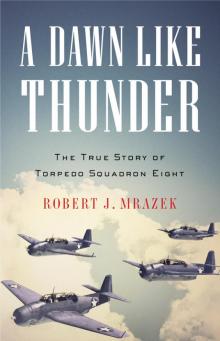 A Dawn Like Thunder
A Dawn Like Thunder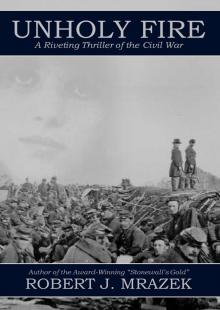 Unholy Fire
Unholy Fire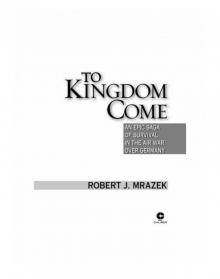 To Kingdom Come
To Kingdom Come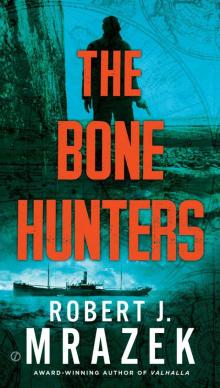 The Bone Hunters
The Bone Hunters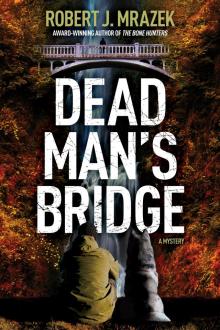 Dead Man's Bridge
Dead Man's Bridge